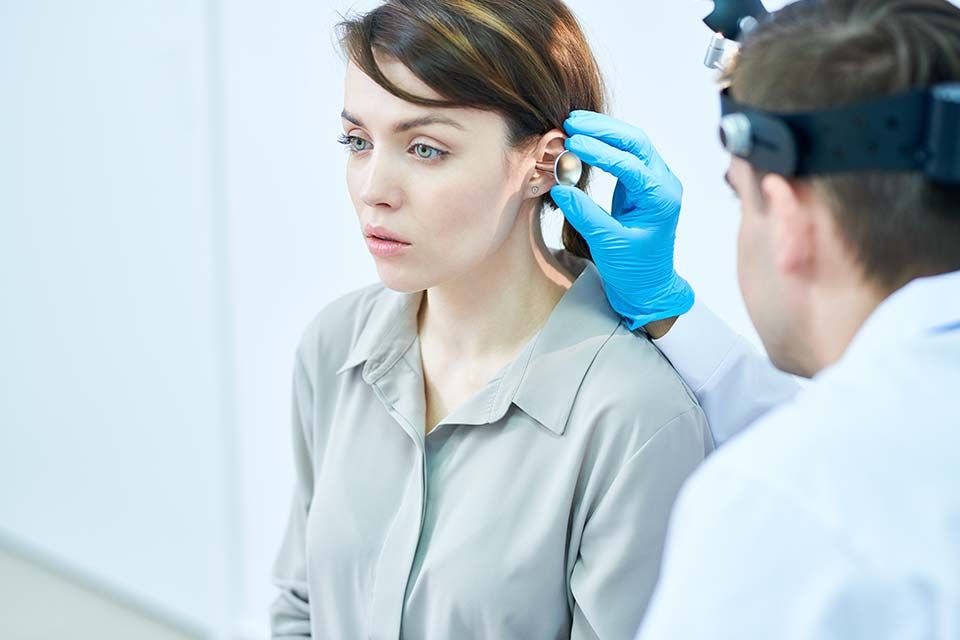Hearing health is an integral aspect of overall well-being, often overlooked until an issue arises. Eustachian Tube Dysfunction (ETD) is one of the many disorders that can impair hearing, but it is a frequent and often overlooked cause. The complexities of ETD, its effects on hearing health, and the alarming phenomena of pulsatile tinnitus linked to it are all explored in this article.
Eustachian Tube Dysfunction: Unveiling the Mechanisms
The middle ear is connected to the back of the nose and upper throat by a small canal called the Eustachian tube, which bears the name of the sixteenth-century anatomist Bartolomeo Eustachio. Its primary duties include controlling middle ear pressure, removing fluid, and shielding the middle ear from infections and secretions from the nasopharynx.
When this vital passageway cannot open or close correctly, it is known as the Eustachian Tube Dysfunction. This malfunction throws off the balance between the middle ear’s internal pressure and the outside world, resulting in many symptoms and problems.
The Impact on Hearing Health
Hearing loss is one of the most noticeable effects of ETD right away. The Eustachian tube’s function in balancing pressure across the eardrum is essential for the best possible auditory function. Pressure imbalances brought on by tube defects can cause symptoms like full ears, difficulties hearing, and muffled hearing. Untreated ETD might cause more permanent hearing loss in severe cases.
Additionally, the fluid accumulation linked to ETD creates a perfect environment for growing bacteria and viruses, raising the risk of middle ear infections (otitis media). Recurrent infections can worsen hearing loss and harm the health of the ears.
Pulsatile Tinnitus: A Distressing Symptom
Pulsatile tinnitus, often described as rhythmic pulsing or whooshing sounds in the ear, is a distressing symptom frequently associated with ETD. It is associated with a heartbeat or vascular flow, as opposed to non-pulsatile tinnitus, characterised by a continuous ringing or buzzing sound. Usually caused by vascular anomalies or variations in intracranial pressure, turbulent blood flow close to the ear is the source of this phenomenon.
When accompanied by ETD, pulsatile tinnitus frequently results from changes in the pressure dynamics of the middle ear. When the Eustachian tube fails to regulate pressure effectively, the resulting imbalances can affect blood flow patterns, contributing to the perception of pulsatile noises.
Diagnostic Challenges and Treatment Approaches
Since the symptoms of ETD frequently coincide with those of other ear-related disorders, diagnosis can be difficult. Medical practitioners usually use a mix of the patient’s history, physical examination, and specialised testing like endoscopy and tympanometry to establish the diagnosis.
ETD treatment plans aim to reduce symptoms, repair Eustachian tube function, and avoid complications. Antihistamines, nasal decongestants, and autoinflation techniques to encourage Eustachian tube opening are non-invasive methods. Surgical procedures like tympanostomy tube implantation or dilatation of the Eustachian tube may be necessary if conservative therapy approaches prove ineffective.
Frequently, treating pulsatile tinnitus linked to ETD calls for a multidisciplinary strategy. Treatment options include lowering blood pressure, treating underlying vascular diseases, or using sound therapy to lessen tinnitus perception.
The Importance of Awareness and Prevention
It is critical to increase public knowledge of ETD’s symptoms, risk factors, and management techniques because of the disease’s profound effects on hearing health. Individuals prone to Eustachian tube dysfunction, such as frequent flyers, scuba divers, or individuals with allergies or sinus issues, should take proactive measures to maintain optimal ear health.
Simple practices like yawning, swallowing, or performing the Valsalva manoeuvre during altitude changes can help equalise middle ear pressure and prevent ETD onset. These techniques can assist in balancing middle ear pressure. Additionally, minimising tobacco smoke exposure, maintaining proper nasal cleanliness, and getting timely medical assistance for recurrent ear problems might lower the risk of complications related to ETD.
Innovations in ETD Research and Treatment
New medical science and technology developments have opened the door for creative approaches to ETD management. Many innovative medication therapies that target inflammation and mucosal congestion, together with minimally invasive surgical methods, are becoming available to clinicians to treat this widespread illness.
Moreover, the effectiveness of novel therapies, including inserting an Eustachian tube stent and intranasal steroid implants in regaining Eustachian tube function and reducing symptoms, is being investigated in ongoing clinical trials. These encouraging advancements highlight the value of continuing funding for hearing health research and give hope to those with chronic ETD.
Psychosocial Implications of ETD
Beyond its outward signs, ETD can have a severe adverse effect on a person’s mental health and quality of life. Anxiety, loneliness, and frustration can result from long-term ear issues such as tinnitus and hearing loss. Pulsatile tinnitus-related sleep difficulties may intensify these psychological impacts, resulting in a vicious cycle of anguish and impairment.
A comprehensive strategy that includes coping mechanisms, psychological support, and symptom management is necessary to address the psychosocial components of ETD. Individuals can develop resilience and adaptability by navigating the emotional hurdles of chronic ear diseases with counselling, support groups, and cognitive-behavioural therapy.
Explore Your Options with ENT LDN
Do you have pulsatile tinnitus or symptoms of Eustachian Tube Dysfunction? Don’t let difficulties hearing stop you. Make an appointment with ENT LDN immediately to start along the path to improved hearing health. Our skilled group of otorhinolaryngologists is committed to offering individualised care and cutting-edge solutions to your needs. Don’t put off improving your quality of life any longer.

